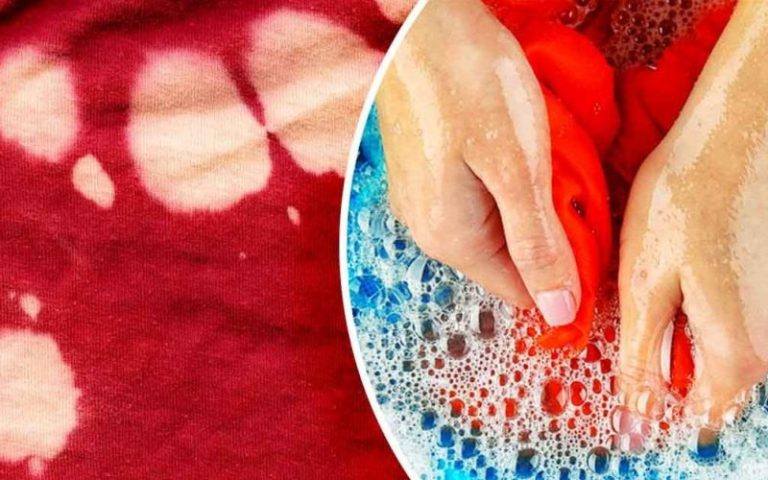For Dyeing: Once the garment has been dyed, always follow the care instructions to ensure the color doesn’t fade. Hand wash or machine wash in cold water and dry gently to maintain the dye’s integrity.
For Design Fixes: After applying fabric paint, markers, or embroidery, make sure the garment is fully dry before wearing or washing. Fabric paint may need to cure for 24-48 hours for the best results.
Variations:
Tie-Dye: If you have several bleach stains or prefer a more vibrant effect, consider turning your entire shirt into a tie-dye project by soaking the whole piece in a bleach solution. The bleach will create a series of white patterns on the fabric, and you can then dye it in a fun color for a creative, colorful result.
Patchwork or Upcycling: If the bleach stain is large, you might want to upcycle the garment into something new by sewing on large fabric patches, cutting it into a different style, or even making it into a smaller item, like a bag.
FAQ:
Q: Can I use regular bleach to remove stains from my clothes?
A: Yes, regular bleach can be used for stain removal, but be careful not to spill it on unintended areas, as it can create permanent stains.
Q: Can I save clothes that are heavily bleached?
A: While heavily bleached clothes may be harder to restore, creative methods like dyeing or designing over the stains can help breathe new life into them.
Conclusion: Don’t stress about bleach stains anymore! With these two tips — dyeing your clothes or turning the stain into a design — you can either restore or embrace the stain, saving your favorite clothes and even creating unique pieces. So next time you have a bleach accident, consider these methods for a quick and creative fix!



Yo Make również polubił
Homemade Spaghetti Sauce: The Secret to a Flavorful and Authentic Italian Dish
Bajeczna tarta z ratatouille i mozzarellą
Unikalny tytuł: „Zaskakujące zastosowania torebek herbaty: Ekologiczne triki, które odświeżą Twój domNeutralizacja zapachów w lodówce Torebki herbaty mogą również pomóc w walce z nieprzyjemnymi zapachami w lodówce. Włóż kilka używanych torebek do pojemnika i umieść go w lodówce – będą one pochłaniały wszelkie nieprzyjemne zapachy, takie jak zapach ryb czy cebuli. Wskazówki dotyczące serwowania i przechowywania: Serwowanie: Te ekologiczne triki nie wymagają specjalnej prezentacji – to po prostu skuteczne, proste rozwiązania w codziennym życiu. Używane torebki herbaty możesz przechowywać w suchym miejscu, aby były gotowe do użycia w razie potrzeby. Przechowywanie: Używane torebki herbaty najlepiej przechowywać w suchym, ciepłym miejscu, np. w kuchennej szufladzie. Warto umieścić je w specjalnym pojemniku lub woreczku, aby zapach herbaty nie przeszkadzał w codziennym użytkowaniu. Warianty: Herbata ziołowa: Torebki z ziołami (np. mięta, rumianek) również nadają się do użycia, oferując dodatkową korzyść w postaci relaksujących właściwości zapachowych. Herbata czarna i zielona: To najbardziej uniwersalne rodzaje herbat, które świetnie sprawdzają się zarówno w neutralizowaniu zapachów, jak i w czyszczeniu powierzchni. Herbata z dodatkami (np. cytryna, imbir): Zawierają naturalne olejki eteryczne, które mogą dodatkowo dodać świeżości Twojemu otoczeniu. FAQ:
FETTUCCINA Z KREWETKAMI NA PATELNI ALFREDO